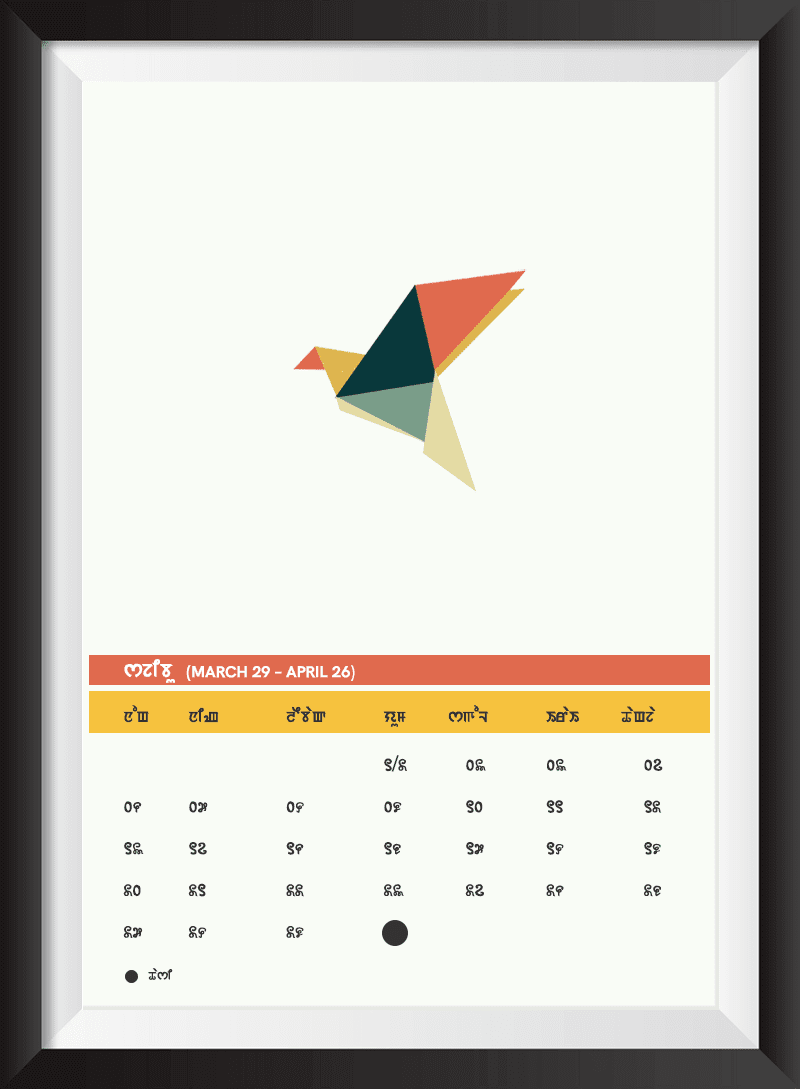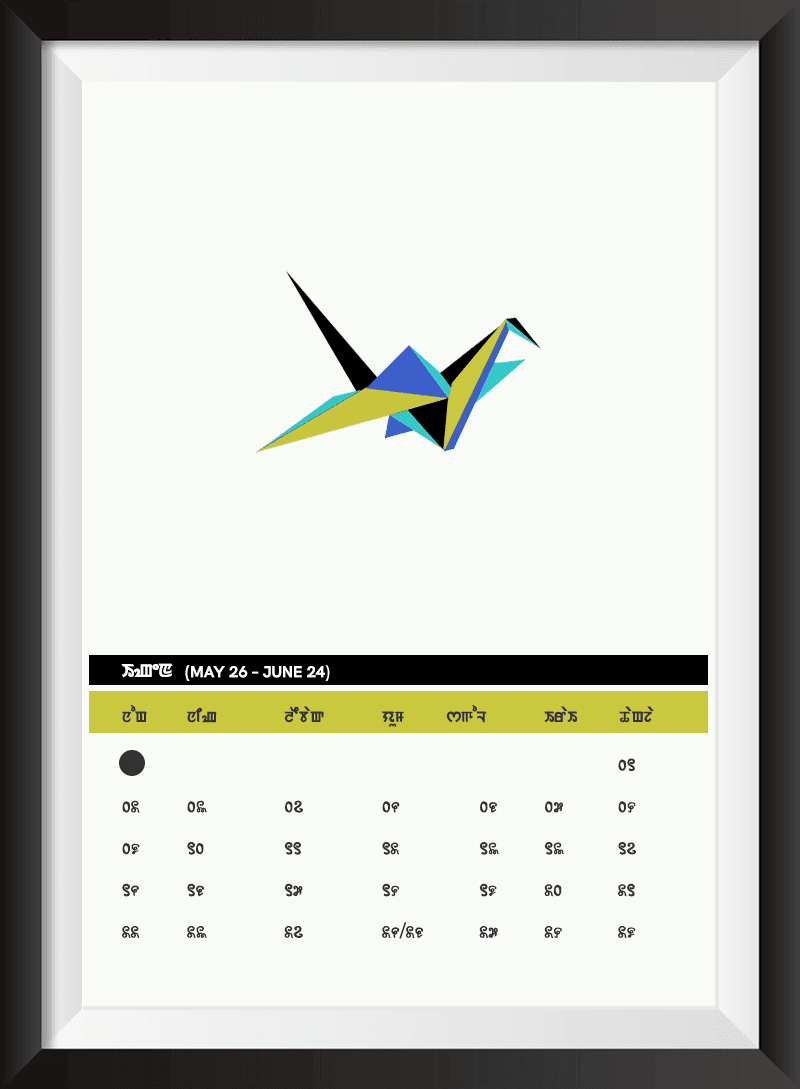Meiteiron Calendar: The Origami Style 2017–18
The Meitei New Year starts with Sājibu Cheiräobā that fell on 29 March this year. But it will take a Meetei’s concept of time duration to understand that the same day is also the second day of Sājibu, the first month. We follow a lunar calendar—based on synodic months—in which a new month comes when the Moon ‘dies’ (the emergence of New Moon) on every 30th. Generally, on one hand,we have the Gregorian calendar and thus we enjoy the privilege of celebrating two New Years’ Day: as usual on 1 January and the traditional version that falls in March–April. On the other, we use this traditional calendar only for rituals and other religious/customary events.
It might look like a simple lunar calendar with a dark sphere (representing ‘Thäsi’ or New Moon) at the end of each month but there are some elements that describe our collective mess. It is always written clearly when the first day of Sājibu (Nongmā Pänba) falls, yet a majority of people also celebrate the 18th day as the New Year’s Day, much thanks to the onslaught of Hindu’s cultural imperialism. No wonder, a few people view that it was not 1949 but the arrival of Hindu missionaries in the 18th century, during the height of Mughal invasion that marked the beginning of the process of Indianisation in the region.
Next, the manifestation of 12 months and seven days of the week might not be wholly indigenous. I’m not sure who knows about the origin of these different concepts of dividing days, weeks and months.
Pride hath a fall, but before I hit the ground, I’d like to mention that there has never been a calendar solely based on lunar calendar. We have the Gregorian calendar while the traditional days and months are inserted as supplements.
FYI, the following graphics covered only the first ten months and I cannot find any 2018 calendar. The problem is that we cannot simply knuckle-count the days. As we have seen, the day of Cheiräobā is counted as two days and in other months, two days are counted as just one. I will update it as soon as I can find a reliable calendar.
[Origamis from Less Is More: the Origami Manipuri Style https://kapilarambam.blogspot.in/2016/05/less-is-more-origami-manipuri-style.html]
It might look like a simple lunar calendar with a dark sphere (representing ‘Thäsi’ or New Moon) at the end of each month but there are some elements that describe our collective mess. It is always written clearly when the first day of Sājibu (Nongmā Pänba) falls, yet a majority of people also celebrate the 18th day as the New Year’s Day, much thanks to the onslaught of Hindu’s cultural imperialism. No wonder, a few people view that it was not 1949 but the arrival of Hindu missionaries in the 18th century, during the height of Mughal invasion that marked the beginning of the process of Indianisation in the region.
Next, the manifestation of 12 months and seven days of the week might not be wholly indigenous. I’m not sure who knows about the origin of these different concepts of dividing days, weeks and months.
Old Manipuri Puːng
In the past, the Manipuris used a kind of water clock, which was entirely different from the modern/western clock/system of measuring time. The Manipuri clock was made up of a copper bowl, which was perforated at the bottom and placed in a cistern—designed in a way so that the bowl sinks 64 times a day. The duration in which the bowl sank to the bottom of the cistern was one unit, measured as one wänglen. The interval of sunrise to sunset was divided into eight equal parts. Each part was known as one yuthāk, and each yuthāk was further divided into eight equal parts, and again each part was one wänglen.
[Text: Time After Time (Zone) https://kapilarambam.blogspot.in/2015/10/time-after-time-zone.html]
Pride hath a fall, but before I hit the ground, I’d like to mention that there has never been a calendar solely based on lunar calendar. We have the Gregorian calendar while the traditional days and months are inserted as supplements.
FYI, the following graphics covered only the first ten months and I cannot find any 2018 calendar. The problem is that we cannot simply knuckle-count the days. As we have seen, the day of Cheiräobā is counted as two days and in other months, two days are counted as just one. I will update it as soon as I can find a reliable calendar.
[Origamis from Less Is More: the Origami Manipuri Style https://kapilarambam.blogspot.in/2016/05/less-is-more-origami-manipuri-style.html]











Comments
Post a Comment